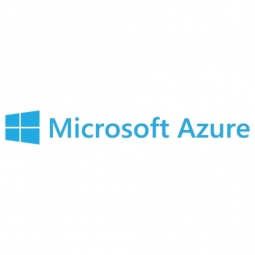Download PDF
Acterys, Azure and Power BI: Streamlining Financial Analytics for Worms Safety
Technology Category
- Functional Applications - Computerized Maintenance Management Systems (CMMS)
- Infrastructure as a Service (IaaS) - Cloud Computing
Applicable Industries
- Electrical Grids
Applicable Functions
- Maintenance
- Quality Assurance
Use Cases
- Inventory Management
- Onsite Human Safety Management
Services
- System Integration
- Testing & Certification
The Challenge
Worms Safety, a leading global alliance of specialists in safety and quality management, was facing a significant challenge in consolidating financial data from its 30 group companies. The company had recently introduced a new Xero financial management system and was seeking a solution to automate the consolidation process. The goal was to improve management reporting with interactive dashboard capabilities, which would enable the company to better meet compliance goals, exploit business potential, and develop a competitive advantage. The existing process was labor-intensive, requiring 10 days of manual spreadsheet maintenance each month, and lacked the depth of analysis and reporting options the company needed.
About The Customer
Worms Safety is a leading global alliance of specialist companies with expert knowledge of regulatory compliance, safety, and quality. The company is focused on helping clients meet their compliance goals, exploit business potential, explore new quality growth opportunities, and develop an essential competitive advantage. With a network of 30 group companies, Worms Safety operates on a global scale, providing specialist services to a wide range of industries. The company had recently introduced a new Xero financial management system and was seeking a solution to automate the consolidation of financial data from its group companies.
The Solution
Acterys, a company specializing in planning and analytics, provided the solution Worms Safety was looking for. Leveraging Azure SQL Server and Power BI, Acterys was able to integrate these technologies to automate the consolidation process for Worms Safety. Within a day, an initial solution that consolidated all companies was live. Shortly after, a comprehensive solution with interactive dashboards and specialized reports was in place. The solution was designed to be user-friendly, allowing the Worms Safety team to maintain and modify their data models themselves. This included handling accounting mappings, new scenarios, calculation metrics, and more, tailored exactly to their needs. The new solution not only saved time but also significantly improved analysis options in Power BI.
Operational Impact
Quantitative Benefit
Related Case Studies.

Case Study
Hydro One Leads the Way In Smart Meter Development
In 2010, Ontario’s energy board mandated that time-of-use (TOU) pricing for consumers be available for all consumers on a regulated price plan. To meet this requirement, Hydro One needed to quickly deploy a smart meter and intelligent communications network solution to meet the provincial government’s requirement at a low cost. The network needed to cover Hydro One’s expansive service territory, which has a land mass twice the size of Texas, and its customers live in a mix of urban, rural, and remote areas, some places only accessible by air, rail, boat or snowmobile. Most importantly, the network needed to enable future enterprise-wide business efficiencies, modernization of distribution infrastructure and enhanced customer service. To meet these needs, Hydro One conceptualized an end-to-end solution leveraging open standards and Internet Protocols (IP) at all communication levels. The utility drew upon industry leaders like Trilliant to realize this vision.

Case Study
Selling more with Whirlpool
Whirlpool wanted to add connectivity to appliances and transform the company's relationship with customers. Traditionally, Whirlpool interaction with customers was limited to purchases made once every ten years. Connected washer and dryers provide exciting new features like remote management of start times and inter-machine communication.

Case Study
SAS® Analytics for IoT: Smart Grid
Companies face falling revenues, rising infrastructure costs, and increasing risk of outages caused by inconsistent energy production from renewable sources. Less money is coming in as more people and organizations take steps to curb their energy use. Utilities are paying more to maintain and build infrastructure due to increasing complexity, resulting from the rising number of intermittent and variable renewable energy sources connected in the distribution grid.

Case Study
Enel Secures Italian Power Generation Network
Electric energy operators around the world are working to increase the reliability and cyber resiliency of their systems. This includes Enel, a global power company that manages and monitors the Italian power grid. This grid:• Serves 31 million customers• Has a net installed energy capacity exceeding 31 gigawatts• Includes more than 500 power generation plants,including hydroelectric, thermoelectric, and wind• Is managed and monitored by Enel 24/7/365• Is operated by Terna, the Italian Transmission System Operator (TSO)Enel is responsible for the availability of the grid’s underlying ICS and industrial network. It also manages Regional Control Centers and Interconnection Centers which connect with the TSO. The TSO manages the flow of energy to the grid plus controls and remotely regulates the power generation of power plants, increasing and decreasing power production as required. The complex system of interaction and cooperation between Enel and the TSO has strong security implications as well as operational and business challenges.

Case Study
IoT based Energy Quality Availability Monitoring Solution
There were several challenges faced:Since this data would be in the public domain, accuracy and authenticity of this data were of paramount importance. It should be able to withstand scrutiny.It is challenging to build an appliance that can withstand a wide range of voltage fluctuations from as low at 90v to as high as 320v. Since the device would be installed in remote locations, its resilience was of paramount importance.The device would have to deal with poor network coverage and have the ability to store and re-transmit data if networks were not available, which is often the case in rural India. The device could store up to 30 days of data.The platform that deals with the data should be readily available and highly reliable and never lose a packet of data.

Case Study
Hydro Utility Builds Foundation for Powerful Efficiencies and Protection
As the main British Columbia electric distributor, BC Hydro provides 1.9 million residential, commercial, and industrial customers with energy. The hydro utility transformed to a digital business with Cisco connected networking, security, and smart grid solutions. • Deliver reliable, high-quality services • Enable remote automation and monitoring • Connect applications over a common networking infrastructure





